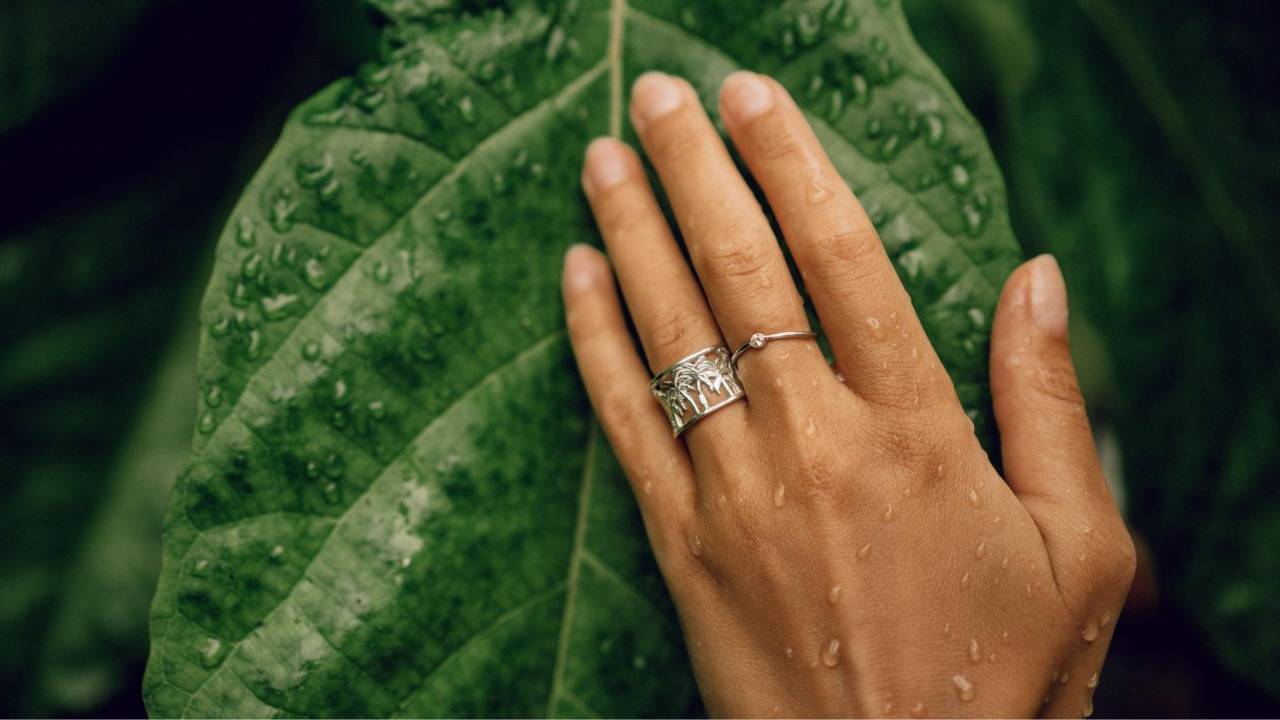Jewelry is a way to express ourselves, jazz up an outfit, and give us confidence. Moreover, it’s an emotional keepsake or an heirloom. Unfortunately, the inside of the jewelry industry is very ugly, with issues such as child labor, poor working conditions, human rights violations, political conflicts, and more.
As jewelry is something you’ll possess and use for years, you should choose pieces you love. But you should also prioritize ethics and check production transparency and sustainability.
Today, I’ll cover everything from the definition of ethical jewelry, explain the biggest issues with the jewelry industry, and talk about the best ethical jewelry brands, so you can proudly wear or gift sustainable and ethically sourced jewelry without feeling guilty about where it comes from.
What is Ethical Jewelry?
Ethical jewelry is jewelry whose origins can be traced down the supply chain. This means you know exactly where the materials come from and how they were sourced, so you can make an informed choice.
The rules for sourcing precious materials differ from country to country, so knowing the country of origin of a precious gemstone is the first step toward deciding if a jewelry piece is ethical.
To decide if the jewelry is ethical, it’s important to know where the jewelry materials come from, right down to the exact mine, where, and how the piece was made. Ethical jewelry companies incorporate sustainability into each part of their business, which means following fair labor practices, minimizing use and waste, and offsetting carbon footprint.

Nowadays, you can buy jewelry with Fairtrade Gold and Fairmined Gold certifications. These are working on creating fair trade jewels and are made mostly by the communities in need. You can read more about WFTO’s 10 principles of fair trade here. An ethical jewelry designer will consider each of these 10 principles and the “from mine to market” route. This means each step of the journey of a piece of jewelry is traceable, from the mine all the way to the final customer.
Another important consideration is sustainability. Ideally, a jewelry piece should benefit and not damage the environment. Unsustainable practices include deforestation, people displacement, soil contamination, poor and dangerous working conditions, unsustainable practices, and more.
But, a sustainable jewelry brand will be transparent about the supply chain. They ensure the person creating the jewelry is treated fairly and the jewelry piece is made with the planet in mind.
Ethical vs. Sustainable Jewelry
It’s important not to mix up ethical and sustainable jewelry. These are often used interchangeably, but they have their own definitions.
Ethical jewelry focuses on the people involved in making a certain piece. This includes the manufacturing process and the supply chain. The piece is fully traceable and doesn’t have a negative impact on the people who made it. It isn’t involved with conflict and supports the workers with fair wages and safe working conditions.
Sustainable jewelry is about the effects manufacturing a piece of jewelry has on the environment. For jewelry to be sustainable, there shouldn’t be any negative impact on the planet.
Social and Political Concerns Around Jewelry Industry
Social and political concerns are the biggest issues in the traditional jewelry industry. Over 100 million people work in the jewelry industry, and most of them live in third-world countries in economically depressed areas. These people rely on artisanal mining, compared to “only” 7 million who rely on industrial mining.
Artisanal mining is carried out illegally by people who sell minerals to survive poverty. Most artisanal mining originates in Africa (22% of the world’s gold comes from Africa), and it’s always illegal.
The traditional jewelry industry is tied to slave labor, pollution, war, and exploitation. You probably know the term “blood diamonds” (diamonds that funded rebel military forces in Africa in the 90s).
But the issue goes further than diamonds. According to the report by Human Rights Watch, materials used to make jewelry — minerals, metals, gems, and more — come from dozens of countries. They are traded, exported, processed, and then turned into jewelry in plants before reaching retailers. Because the supply chain is so complex, it’s extremely easy for unethical practices to go unnoticed.
Here are some of the social and political issues that happen in the jewelry industry.
Human Displacement
Huge mines have transportation corridors. This means huge areas of land fall under the control of the mining company.
The result is the displacement of hundreds and in extreme cases thousands, of local residents. These people have to leave their homes and livelihoods and find another place to settle.
Environment Changes Reduce Quality of Life
Even if locals aren’t forced to move, they usually end up working in the mines and are exposed to unhealthy conditions.
Mines lead to soil degradation, lower biodiversity, bad water quality, and more. People need all of these things to survive and live normally, but they are compromised in a mining area.
Moreover, locals are exposed to dangerous chemicals. For example, cyanide is an extremely toxic chemical. But it’s also one of the chemicals most often used in the jewelry industry.
Mercury is also used for gold mining, and workers are regularly exposed to it. This leads to disability and death.
Child Labor
It’s believed that one million children work in mining operations. These children are exposed to dust and particles, which lead to debilitating health issues. Moreover, they are abused and often victims of trafficking.
Africa is especially hit with child labor issues, especially in countries such as Ghana, Indonesia, Mali, Uganda, and many more.
Dangerous Working Conditions
I talked about how mercury and cyanide are used in gold mines. But the dangers go further than this. All mining jobs have a risk of death, and miners in South Africa have a 20% higher mortality rate than the rest of the population.
Miners are exposed to toxins in underwater mines, breathe in dust that leads to lung problems, and have skin diseases because of poor working conditions.
Dangers of Gem Cutting
You know that princess cut you’ve admired for its shine and sparkle? It comes at a price for gemstone workers. Most gemstone workers work without any safety equipment. They aren’t given any protective gear, nor is there ventilation.
When a diamond is cut, it produces microscopic dust, which can lead to a condition called Black Lung. This scars the lungs, and people are unable to breathe.
Conflict
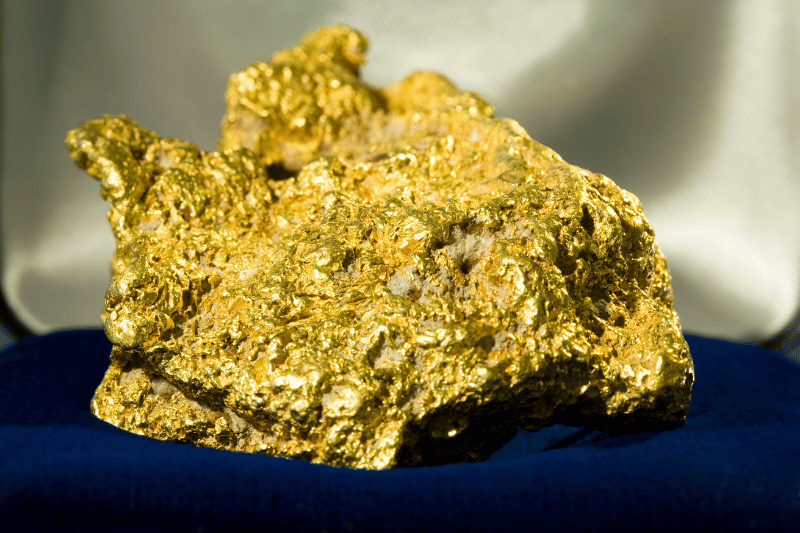
According to the United Nations Office on Drugs and Crime, illegal mining and trafficking of precious gems and metals lead to disrupted peace, stability, law, development, and economy.
Diamonds have long been associated with armed groups. There’s evidence that diamond, gold, and silver mining has funded groups that performed massacres and sexual violence.
Diamonds are commonly illegally traded to fund wars in countries in central and western Africa.
Even more concerningly, the conflicts aren’t only from individual groups but from government forces that abuse their power. For example, diamond workers in Angola were tortured by government soldiers because they wanted control of the mines.
Environmental Impacts of the Jewelry Industry
There are huge environmental and sustainability concerns around the jewelry industry. These range from air, and water pollution, to deforestation, soil degradation, and many others.
One mined carat of gold releases 57 kg of carbon. 250 tons of earth are shifted for one single diamond carat. 148 million carats are mined yearly, so imagine how many tons of earth are shifted in search of precious metals.
Here are some of the biggest environmental issues in the jewelry industry.
Deforestation

Deforestation is a huge concern, especially in the Amazon Rainforest. Amazon Aid Foundation said in its 2016 documentary that one gold wedding ring requires the mining of 20 tons of earth. Between 2005 and 2015, 4,500 square miles of Amazon were lost because of mining minerals. This is 9% of Amazon.
This data is especially concerning as reports are warning that Amazon is reaching a tipping point. We’ll need to rebuild it if we want it to work as an essential part of the global carbon cycle.
Moreover, deforestation isn’t limited to only Amazon. It’s happening on other continents as well. For example, the sapphire rush in Madagascar in 2017 resulted in thousands of acres of forest lost.
Pollution
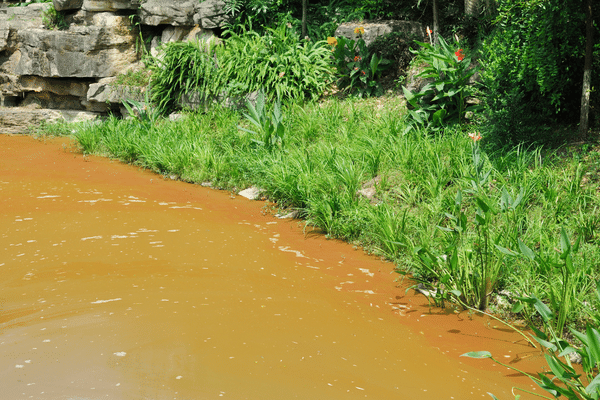
The most frequently used method for gold and silver extraction is cyanidation. I talked about how toxic cyanide is. It pollutes the water and negatively impacts agriculture and aquatic life.
Moreover, metal mines are huge sources of atmospheric mercury pollution because mercury is used to recover metal particles from the soil. This further contaminates the water and poisons animals.
Overall, metal mining uses huge amounts of water, and toxic chemicals contaminate groundwater and drinking water.
One devastating example of pollution happened in the Nigerian state of Zamfara, where 400 children were poisoned over 6 months.
Destruction of Ecosystems
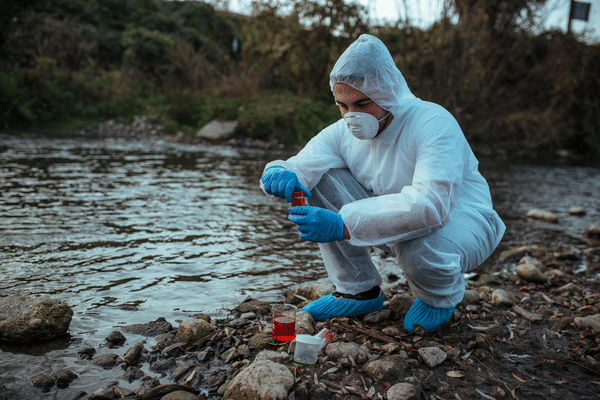
Mining locations have huge noise and vibration levels, which collapses local wildlife. Moreover, erosion is common in mined areas, which results in vegetation loss. Mining accidents result in thousands of dead local animals and plant species.
Huge areas of forests and grasslands are cleared for massive pits. Giant ore crushers send pollutants into the air to grind rock into a slurry.
Mining affects waterways as well. Local water sources are polluted with slurry during rock grinding. Diamond mining companies change the course of rivers or build dams to reach the gems under riverbeds. This destabilizes entire ecosystems. Farmers rely on these waterways for survival and are hugely affected when they disappear, so they have to look elsewhere for survival.
There are many African countries where water is scarce, and they are left with polluted rivers after mining operations are done. One example is Zimbabwe, where livestock died, and people got sick because of toxic water sources.
Soil Degradation

Soil degradation happens the most when there’s open-pit mining. Fertile farmland is stripped of the topsoil, and once diamond sources are exhausted, there are only inhospitable pits.
Stagnant water becomes a breeding ground for viruses and parasites, especially during the wet seasons.
What Are The Sustainable Jewelry Options?
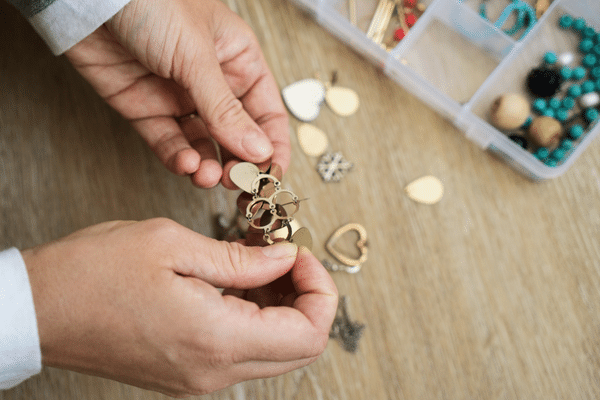
The shine, sparkle, and luster of jewelry are difficult to resist. Luckily, there are several sustainable jewelry options you can go for.
Don’t Buy Jewelry At All
I know this may seem drastic, but it doesn’t mean giving up jewelry completely. Instead of buying, borrow jewelry.
For example, you know all those glammed-up actresses dripping in jewels at Oscar and other award ceremonies? They wear borrowed jewelry. The same goes for influencers. It’s all a part of a marketing campaign.
You can also borrow jewelry from friends, family, and businesses that specialize in this. Moreover, borrowing jewelry gives you a wider range of jewelry to try, and you won’t get bored by wearing the same piece over and over again.
Buy Secondhand Jewelry
There are so many stunning vintage jewelry pieces waiting for you to discover them. You can find unique pieces by buying secondhand. Moreover, you won’t contribute to environmental destruction this way.
Pro Tip: Check stores such as Etsy and Vestiaire Collective for original preloved pieces.
Choose Recycled Jewelry
Some jewelers create pieces made from recycled and waste materials.
Moreover, precious metals can be recycled. It’s extremely easy to melt silver and gold and reform it into something new. These metals won’t lose any quality during this process, which is great for the environment.
Gemstones can be recycled as well. It’s more difficult to do, but possible.
Recycled jewelry is one of the best choices for the environment because it doesn’t require mining, which means no soil is disturbed, nor are toxic chemicals used.
Finally, this is a way to give a second life to an antique ring or a damaged bracelet, especially if you’re sentimentally tied to it. You can give it to a professional, describe what you want, and have a unique piece made.
Ethically-Sourced Jewelry Materials
Ethically-sourced gems are another good option. Best ethical jewelry brands will be open about the workers’ rights, talk about health and safety, use sustainable practices, and ensure the gems are traceable.
Lab-Grown Diamonds
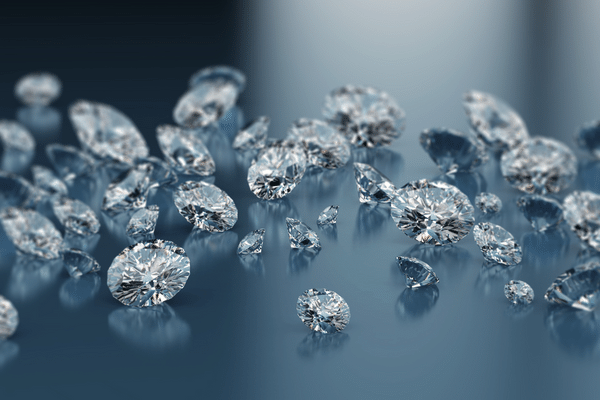
It’s extremely difficult (bordering on impossible) to make sure the diamonds are sourced ethically. Luckily, there’s a rise in diamonds grown in a lab. Nowadays, 70% of millennials say they would buy cultured diamonds instead of mined ones.
You can be sure laboratory-grown diamonds are produced without any humanitarian issues. They are made using heat and pressure, the same as the ones found in the earth. But instead of harming the planet, they are made using machines.
But before you run to get man-made diamonds, you should know there are some issues here as well. Mostly, the process isn’t transparent. The machines used to make engineered diamonds need a lot of energy, and it’s possible that emissions from these diamonds are higher than naturally mined ones.
Overall, we need more data on laboratory diamonds. Luckily, there are several companies that grow diamonds in the lab and are certified carbon neutral. These companies use renewable energy for their operations.
Identifying Ethical Jewelry Materials
Jewelry can be made from a wide plethora of materials. The problem is one accreditation that can’t be used for all of them.
Here’s a breakdown of all materials that can be used for ethically made jewelry, so you can recognize if the jewelry you want to buy is ethical or not.
Silver
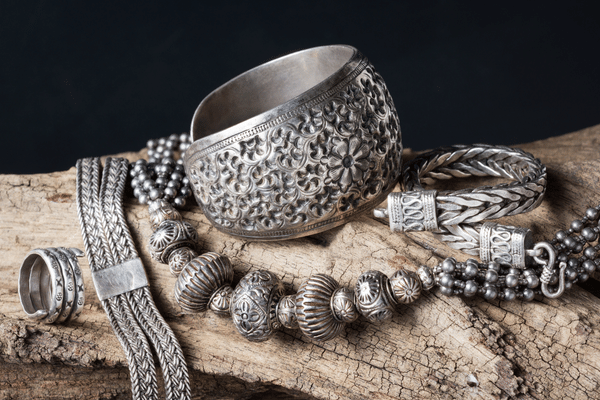
Silver is a precious metal commonly used to make durable jewelry. Same as gold, it comes from the earth’s crust and has to be extracted by mining.
To make sure you’re getting ethically sourced silver jewelry, look for Fairmined certification. This is an organization that vets and certifies mining operations.
Apart from buying certified silver, you can also go for 100% recycled silver jewelry. This means silver used to make a jewelry piece is 100% recycled — there’s 0% newly mined material used.
Recycled silver can come from various sources, such as industry and industrial waste, electronic scraps, fuel cells, scrap silver from old jewelry, TVs, and more.
Recycled silver is one of the best materials for the environment. It’s the most ethical option because there’s no newly mined material.
Gold
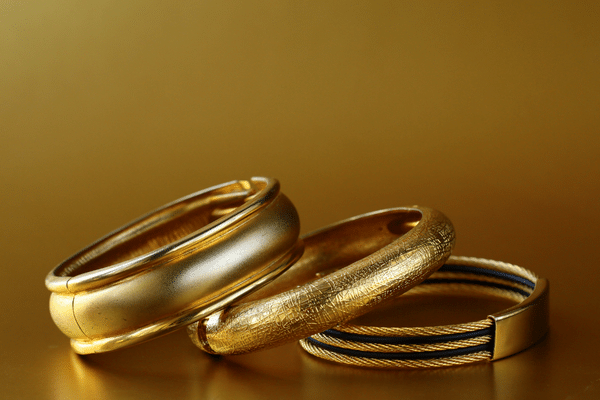
Same as with silver, gold is extracted through mining. But you can get ethical gold jewelry by getting Fairmined-certified pieces. This ensures the gold used to make sustainable necklaces, bracelets, rings, and more has been extracted with little environmental damage. It usually comes from small artisanal mines instead of big industry ones.
Also, Fairtrade ensures that mining communities have fair pay, there’s no child labor, and the working conditions are safe.
Finally, you can get jewelry made from recycled gold. Similarly to silver, this gold comes from smartphones, old jewelry, dental crowns, and more. It’s the most sustainable and ethical option you can go for if you want gold jewelry.
Platinum
Platinum is another precious metal that we get from mining. It’s not often used for jewelry because it’s very sensitive and gets scratched easily.
Same as with gold and silver, there are ethical and environmental concerns for platinum mining, but you can opt for recycled platinum.
Diamonds
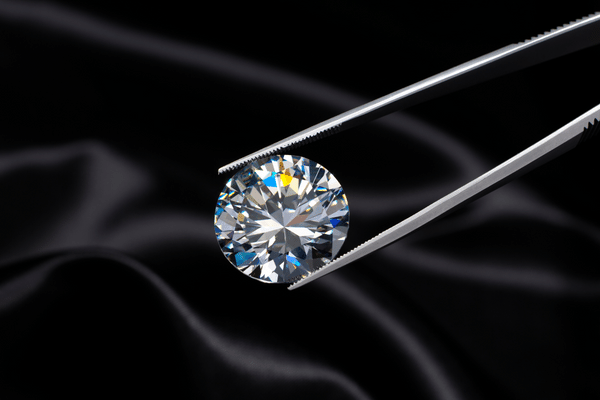
Diamonds are a huge topic of controversy. Like precious metals, they are mined from deep within the earth and have huge ethical and sustainability concerns. Even more worrying than silver and gold, diamonds are associated with armed conflict.
One way to ensure you buy ethical diamonds is to buy ones with the Kimberley Process certification. This certification is a collaboration between 80 governments and the gem industry that puts a stop to trade between certified and uncertified countries.
Another good certification to look out for is SCS Global Services. This organization gives certification to producers that use recycled metals and gemstones and avoid conflict.
Finally, diamonds grown in a lab are a good alternative to mined diamonds. These have the same carbon structure as mined diamonds but are man-made. There are some concerns with cultured diamonds, but overall buying a diamond in a lab is a far more ethical option than a mined one.
Gems and Stones

Jade, opal, quartz, ruby, and many more gems and stones are used to make jewelry. While most of the controversy is about diamonds, there are also issues in the colored gemstone industry.
Diamonds are usually mined through large-scale operations, but gemstones are mined through small-scale efforts. Up to 80% of colored gems are mined using hand tools. This means there’s a lower impact on the environment. But it’s also more difficult to regulate.
For example, Burma supplies up to 90% of the world’s rubies, and this country has been under military rule for the last 50 years and is known to use child labor.
Luckily, ethical gemstones are easy to find, but you have to do some research. Look for ethical and sustainable jewelry companies that clearly state where the gems come from. Ask about a designer’s sourcing practices or check their About Us page.
Also, some gems, such as ammolite from Canada and howlite from the US, are ethically sourced. Generally, gemstones mined from more affluent countries are more likely to be ethically sourced.
Another way to get ethical gemstones is to go the recycled route. Look for stones that were owned before and have reentered the supply chain.
Glass
Glass is a good alternative to gems and stones. We make glass by melting down natural materials, such as sand, soda ash, and limestone.
However, the main drawback is that glass isn’t as sturdy as gems. For example, diamond is the hardest material on earth, while glass is breakable. However, glass is a great material for jewelry because it can be infinitely recycled. Moreover, you don’t have to worry about controversial mining practices.
How To Identify Ethical Jewelry Brands?
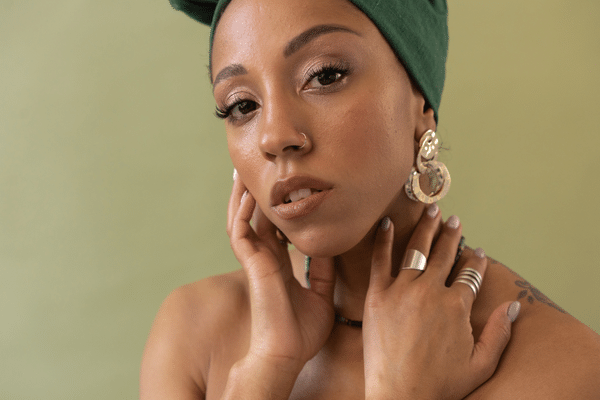
Find Brands with a Positive Impact
Let’s be completely real: there will always be social, economic, political, and environmental harm when buying jewelry.
The best we can do is minimize these as much as we can. One of the best ways to do this is to buy from brands that give back to the environment and workers that source the gems.
A sustainable jewelry company will have several practices that minimize the environmental impact. These include planting trees, rehabilitating old mines, and stopping water and air pollution. Moreover, they support the communities that mine the jewels by providing free education, paying fair wages, and ensuring safe working conditions.
Look for Jewelry Certifications that Ensure Sustainability
I already mentioned some of these, but here’s a complete list of certifications to look for when shopping for ethical jewelry:
- Fairtrade — This certification ensures there are good working conditions, living wages, and sustainable environmental activities.
- The Kimberley Process — This is a UN resolution. It’s an international standard for diamonds. Its aim is to stop blood diamonds from entering the market and protect the stones during mining. Diamonds with this certification are marked as conflict free, but there’s a lot of skepticism about how effective this really is.
- Responsible Jewelry Council — Is the leading standard in the sustainable jewelry industry. It ensures the labor rights, health, and safety of the workers. Similarly to the Kimberly Process, there are some shortcomings because it can’t give enough assurance of adherence to standards of responsible sourcing.
- Institute for Responsible Mining Assurance — This is the only third-party certificate for industrial mining sites. It only applies to specific mines and ranks the sites according to a step model of improvement.
- Fairmined — Certifies that gold comes from companies that fulfill the requirements of responsible practices, such as fair pay, low use of chemicals, and no conflict.
- Canada Mark — This certification ensures the full traceability of diamonds. Moreover, larger pieces are laser marked with a code that proves their origin. Also, diamonds are mined under strict Canadian regulations.
Shop Recycled
Shopping recycled goes for all jewelry, but especially precious metals. This is the best thing you can do for the environment and social welfare.
Look for brands that use recycled metals. For example, Brilliant Earth uses mostly recycled metals in its jewelry. SOKO uses 100% recycled gold.
Or, check the thrift stores close to you. Browse through the vintage Etsy pages for preloved pieces.
Know the Gem Origin
If you don’t want a recycled piece, that’s alright. You can ethically shop new gems and metals, but knowing where they come from is key.
Your jeweler has to know the origin of their diamonds and stones and be able to track the materials in the supply chain.
A good document to ask for is the Diamond Origin Report from the Gemological Institute of America, as it clearly states the origin of the diamond.
7 Most Ethical Jewelry Brands You Can Choose From
1. SOKO
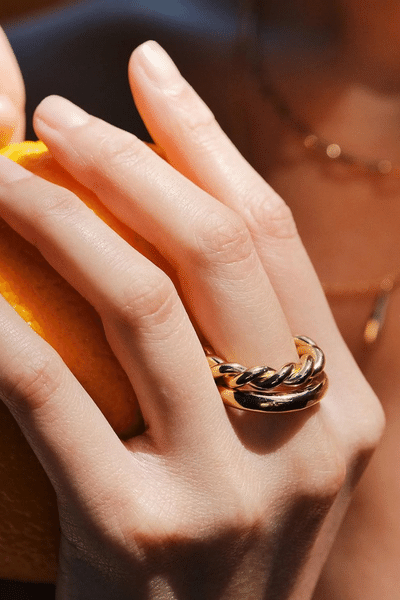
SOKO is a women-led jewelry brand that connects artisan communities in Kenya with the global market.
This sustainable jewelry company uses materials that are recycled and repurposed. The materials they use include brass, teak wood, reclaimed bone, and homemade beads from Kazuri, a women’s collective in Kenya.
SOKO is an ethical business because they have fair labor practices. This is a B Certified Corporation that promotes diversity and inclusion. Their artisans earn five times more than the average wage.
SOKO is also a green business — they are actively working on reducing the use of dangerous materials and resources such as water, energy, and others.
Finally, they have a wide range of affordable pieces that ship worldwide. Their jewelry is inspired by architecture and tribal designs. This is one of the best options you can go for Kenyan artisan-made jewelry.
2. Raven + Lily

Raven + Lily is a jewelry brand dedicated to bringing positive social and environmental impact.
The materials they use include ethically precious and semi-precious stones. These are often used in raw form, so the rocks and minerals are preserved. The metal they use is 100% upcycled and hand-polished brass.
Raven + Lily is an ethical business because they are a member of Fairtrade. Moreover, they support over 500 artisans worldwide, many of whom come from underrepresented groups. They pay living wages and provide flexible working hours and maternity leaves.
Raven + Lily is 100% women-led, and 70% of their artisans are women.
Their product descriptions state exactly where each piece comes from. Moreover, they use carbon-neutral shipping and eco-friendly packaging, so this is truly one of the best brands you can buy from in terms of sustainability.
3. AUrate
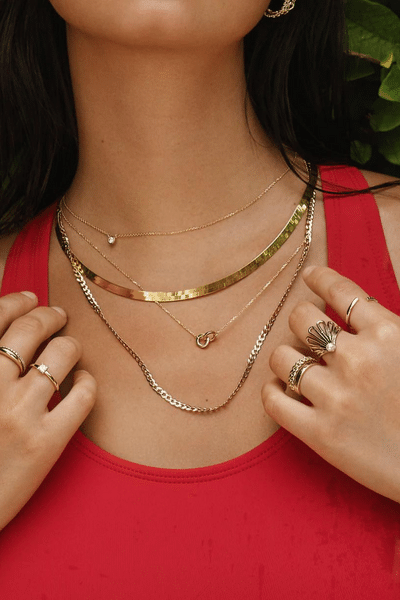
AUrate is the best choice if you want an ethical engagement ring. But this brand also has jewelry for all occasions, including earrings, bracelets, necklaces, and even anklets.
AUrate’s materials include 100% recycled gold, conflict-free diamonds, precious gems certified by the Kimberly Process, and sustainably harvested pearls. Moreover, they don’t throw away excess materials but recycle them.
AUrate is an ethical brand because they work with mines that strictly adhere to fair wages and safe working conditions and support the local communities.
AUrate supports diversity. They currently have 75% female leadership and 77% diversity. They employ seventh-generation artisans.
Overall, AUrate is the best choice if you want fine jewelry without any markups. Their jewelry is inspired by NYC icons, such as the Brooklyn Bridge, so expect some flare to their pieces.
4. Brilliant Earth
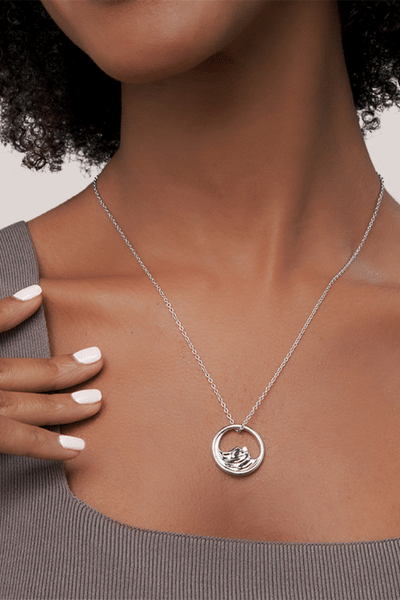
Brilliant Earth creates luxury sustainability jewelry. Their materials include recycled metals, lab-grown diamonds, upcycled diamonds, and more. 93% of the precious metals they use are recycled or reclaimed, and they don’t use newly mined diamonds.
Brilliant Earth is inclusive, and they have a wide range of jewelry for both men and women. You can even choose sustainable materials and create a custom ring, necklace, or earrings.
Brilliant Earth is an ethical brand because they are certified by the Responsible Jewelry Council and Fairmined. They use mercury-free mining and ensure the diamonds don’t finance rebel groups. The brand includes a sourcing map on the website that states the country of origin for all of its gemstones.
Finally, they have traceability throughout the entire supply chain. Their pieces come in wooden boxes and are certified carbon-free.
5. Catbird
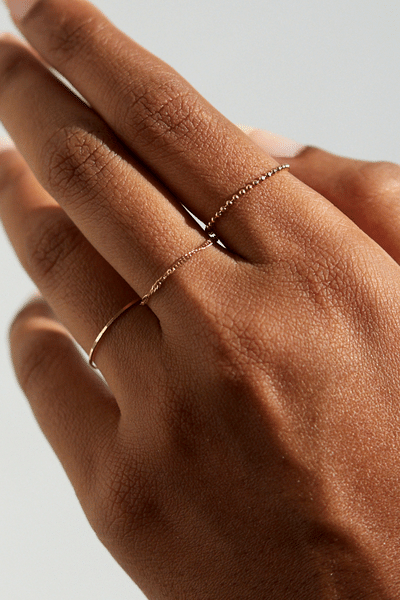
Catbird is a New York brand that started as a storefront and developed into an ethical fine jewelry brand.
Catbird uses various sustainable materials, such as recycled metals, lab-created diamonds and gems, and sustainably harvested pearls. All of their pieces are made in-house in Brooklyn.
Catbird is an ethical brand because they source its pearls from a third-generation Chinese pearl industry farm. They only use conflict-free gold. Moreover, they pay above-average wages, provide healthcare and have a retirement plan.
This woman-owned business gives back to various organizations, including Planned Parenthood, Black Lives Matter, and others. So far, they’ve given over a million dollars to different organizations.
Overall, if you want delicate pieces for layering, Catbird is a great choice.
6. Mejuri
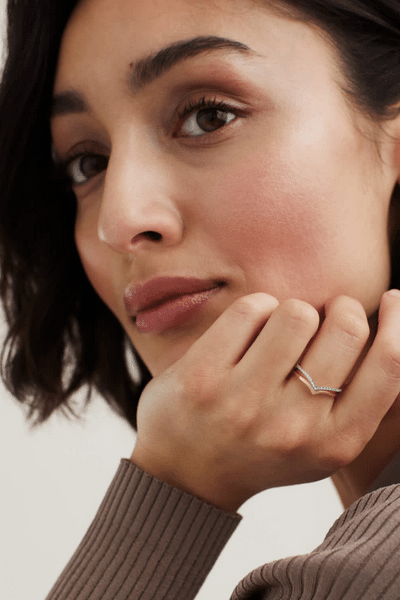
Mejuri is owned by a third-generation jeweler, Noura Sakkijiha.
The CEO knew how ugly the jewelry world can be, so the company offers fair trade products that give back to the artisans.
Mejuri focuses on elegant, everyday pieces. Their materials are 14k gold, recycled and new, 18k gold vermeil, and AAA-grade gemstones and peals.
The sterling silver and diamonds are sourced conflict-free from Kimberley Process suppliers.
They use 14k gold because it’s more durable than 18k, and they want their jewelry to be as durable as possible.
Mejuri is an ethical brand because they are completely transparent. They use 100% traceable gold, 70% recycled materials, and 30% from small mines.
The brand partners with jewelers around the world to eliminate middlemen and give fair prices.
7. ABLE
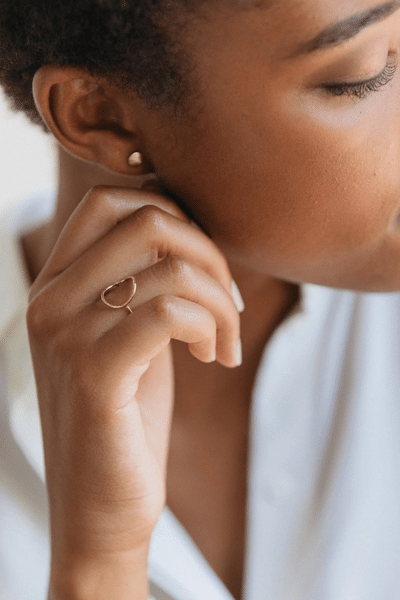
You may know that ABLE is an ethical shoe brand, but they also make sustainable jewelry. This is one of the more affordable sustainable jewelry brands that also make personalized pieces.
Materials ABLE uses include recycled metals, 14k gold fill, vermeil, brass, sterling silver (without nickel), and 18k gold plating.
ABLE is an ethical brand because they handcraft the jewelry in Nashville, Tennessee.
They employ women in an effort to curb generational poverty. They are also transparent with their lowest wages in the US and Ethiopia.
They send all excess metal to a refinery to be melted into new conflict-free silver or gold.
Finally, their shipping boxes can be repurposed. This is a great brand if you want affordable, sustainable pieces.
Should You Buy Ethical Jewelry?
I hope I have helped you understand the grave situation in the jewelry world. For something so sparkly, its origin is very bleak and troubling. From dangerous working conditions, high mortality rates, polluted waterways, and destroyed farmlands to conflict funding, the jewelry industry of full of issues.
You can help put a stop to this by choosing ethical jewelry. Look for certification and jeweler’s sourcing practices, and check if they know the traceability of the precious metals and gems used to make the pieces.
Finally, shop from the brands I’ve listed above. Choose a brand that best aligns with your beliefs and budget, and adorn yourself with stunning jewelry with peace of mind.

